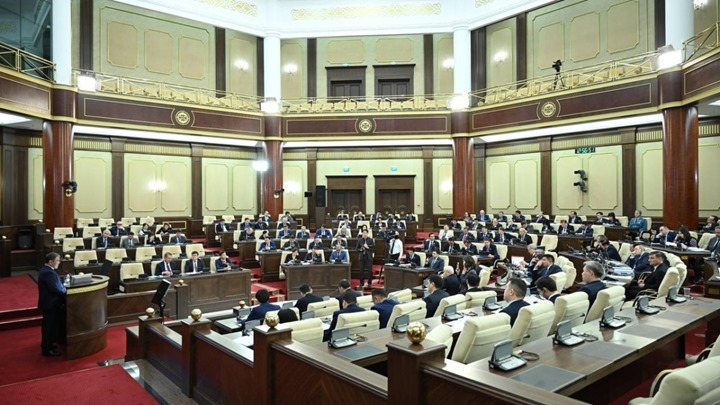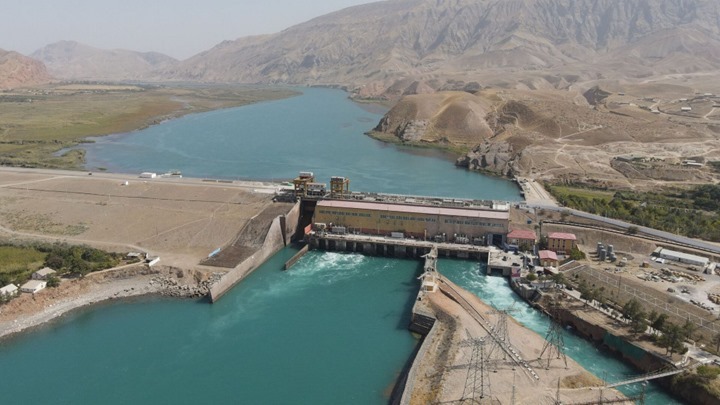The new Water Code of Kazakhstan was adopted in the first reading
Minister of Water Resources and Irrigation of the Republic of Kazakhstan Nurzhan Nurzhigitov presented at a meeting of the Mazhilis of the Parliament an updated draft of the new Water Code, developed jointly with deputies of the lower house of Parliament and experts. The document consists of 121 articles, 14 chapters and 6 sections, the press service of the ministry reports.

The development of the Water Code was carried out according to five basic principles. These are the recognition of water as an integral part of the environment, the basis of the life of the population and economic development, the recognition by the state of the economic value of water resources in their use, the integrated use of surface and groundwater, water conservation based on efficient and rational use of water resources, public involvement in solving problems of protection and use of water resources.
The new Code introduces the concept of “water safety” for the first time. It covers the protection of the population and the economy from water scarcity and pollution of water bodies. To prevent the depletion of water bodies, the concept of “ecological runoff” is introduced – the minimum allowable water level to maintain the ecosystems of rivers, lakes and seas.
The requirements for the protection of water bodies have been expanded. First of all – small rivers and lakes. In particular, the construction of deaf dams on small rivers is prohibited.
For the integrated use of surface and groundwater, as well as the re-establishment of the National Hydrogeological Service, the transfer of the groundwater management function from other authorized and local executive bodies to the Ministry of Water Resources and Irrigation is envisaged.
The new code also provides for the development of a Master Plan for Integrated Water Resources Management and basin plans. These documents will define the goals, objectives, approaches and main activities based on forecasts of the availability of water resources. The conclusions and recommendations of these plans will have to be taken into account in State planning.
Mechanisms for stimulating water conservation are included, which are not available in the current version. For example, a permit for the use of water will be issued only if there is a plan for a phased transition to recycled or re-water supply.
The transition is given five years. For the development of plans – two years from the date of introduction of the new Water Code into force.
Another feature of the new document was the introduction of a separate chapter on the safety of hydraulic structures. It systematizes the issues of forming and maintaining a register of hydraulic structures, their operation, as well as conducting multifactorial surveys and developing safety declarations. It also provides for the development of safety regulations for hydraulic structures.
On behalf of the Head of State, a set of amendments has been developed to combat floods and drought, as well as the responsibilities and powers of government agencies at all levels have been defined. For example, regulations are being introduced to prevent the harmful effects of water, including the cleaning and deepening of surface water bodies and the creation of engineering flood protection systems.
To ensure citizens’ access to information on water resources, a National Information Report will be published annually. It will contain information on the state, protection and use of water in the country.
To digitalize the water industry, it is planned to create a National Information System, the operation of which will be provided by the Water Resources Information and Analytical Center established this year.
Much attention in the new Water Code is paid to public control in the field of protection and use of water resources. Thus, basin inspections are endowed with investigative functions, which will make it possible to tighten requirements for the protection of water resources, more effectively combat their illegal use and the “black market” of water.
The document also provides for amendments and additions to the Environmental, Business, Civil, Land Codes and 9 laws of the Republic of Kazakhstan.
“We express our gratitude to all the deputies who actively and constructively worked on the Water Code. The events of recent years, including this year’s large-scale floods, have once again emphasized the importance of reforming the water resources management system. The new Water Code takes into account international experience and is aimed at protecting ecosystems, adapting to climate change and sustainable economic development through rational water management. The document focuses on the protection of water resources from depletion and pollution and only then on economic needs. This is one of the fundamental differences between the new Water Code and the current one,” said Minister of Water Resources and Irrigation of the Republic of Kazakhstan Nurzhan Nurzhigitov.
272 amendments have been made to the current code over the past 20 years. Amirkhan Kenshimov, an expert in the field of water management, expressed his opinion on the draft of the new Water Code. According to him, in the current code, many norms remained declarative, some are repeated or contradict each other.
“The Water Code of 2003 was developed based on the water policy and economic conditions of that time. However, today, in the conditions of climatic changes, it no longer meets modern requirements. In the new edition of the Code, the norms were systematized, emphasis was placed on the conservation and economy of water resources. For example, basin inspections are given not only the functions of state control, but also the powers of investigation. This will strengthen the fight against illegal use of water,” said hydraulic engineer Amirkhan Kenshimov.


